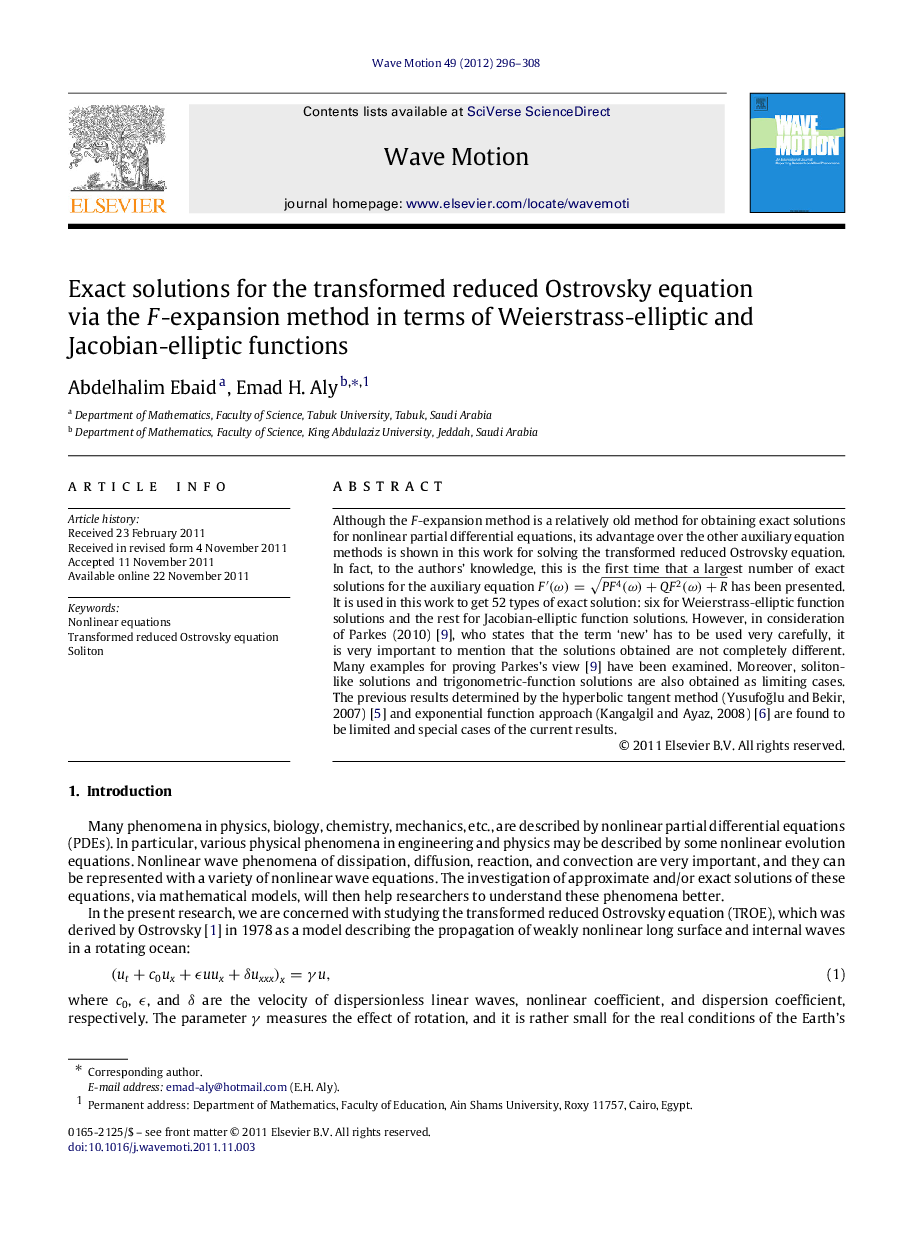| کد مقاله | کد نشریه | سال انتشار | مقاله انگلیسی | نسخه تمام متن |
|---|---|---|---|---|
| 1901290 | 1045673 | 2012 | 13 صفحه PDF | دانلود رایگان |

Although the FF-expansion method is a relatively old method for obtaining exact solutions for nonlinear partial differential equations, its advantage over the other auxiliary equation methods is shown in this work for solving the transformed reduced Ostrovsky equation. In fact, to the authors’ knowledge, this is the first time that a largest number of exact solutions for the auxiliary equation F′(ω)=PF4(ω)+QF2(ω)+R has been presented. It is used in this work to get 52 types of exact solution: six for Weierstrass-elliptic function solutions and the rest for Jacobian-elliptic function solutions. However, in consideration of Parkes (2010) [9], who states that the term ‘new’ has to be used very carefully, it is very important to mention that the solutions obtained are not completely different. Many examples for proving Parkes’s view [9] have been examined. Moreover, soliton-like solutions and trigonometric-function solutions are also obtained as limiting cases. The previous results determined by the hyperbolic tangent method (Yusufoğlu and Bekir, 2007) [5] and exponential function approach (Kangalgil and Ayaz, 2008) [6] are found to be limited and special cases of the current results.
► The FF-expansion method has been successfully applied to obtain 52 types of exact solutions for the transformed reduced Ostrovsky equation.
► This method posses all types of exact solutions including those of Jacobian and Weierstrass-elliptic functions.
► Soliton-like solutions and trigonometric-function solutions have been also obtained.
► It has been proved that the solutions in Sections 5 and 6 are equivalent to the solutions discussed in [9].
► The solutions in Section 3 become equivalent to the solutions in [9] when m→1m→1 and m→0m→0.
Journal: Wave Motion - Volume 49, Issue 2, March 2012, Pages 296–308